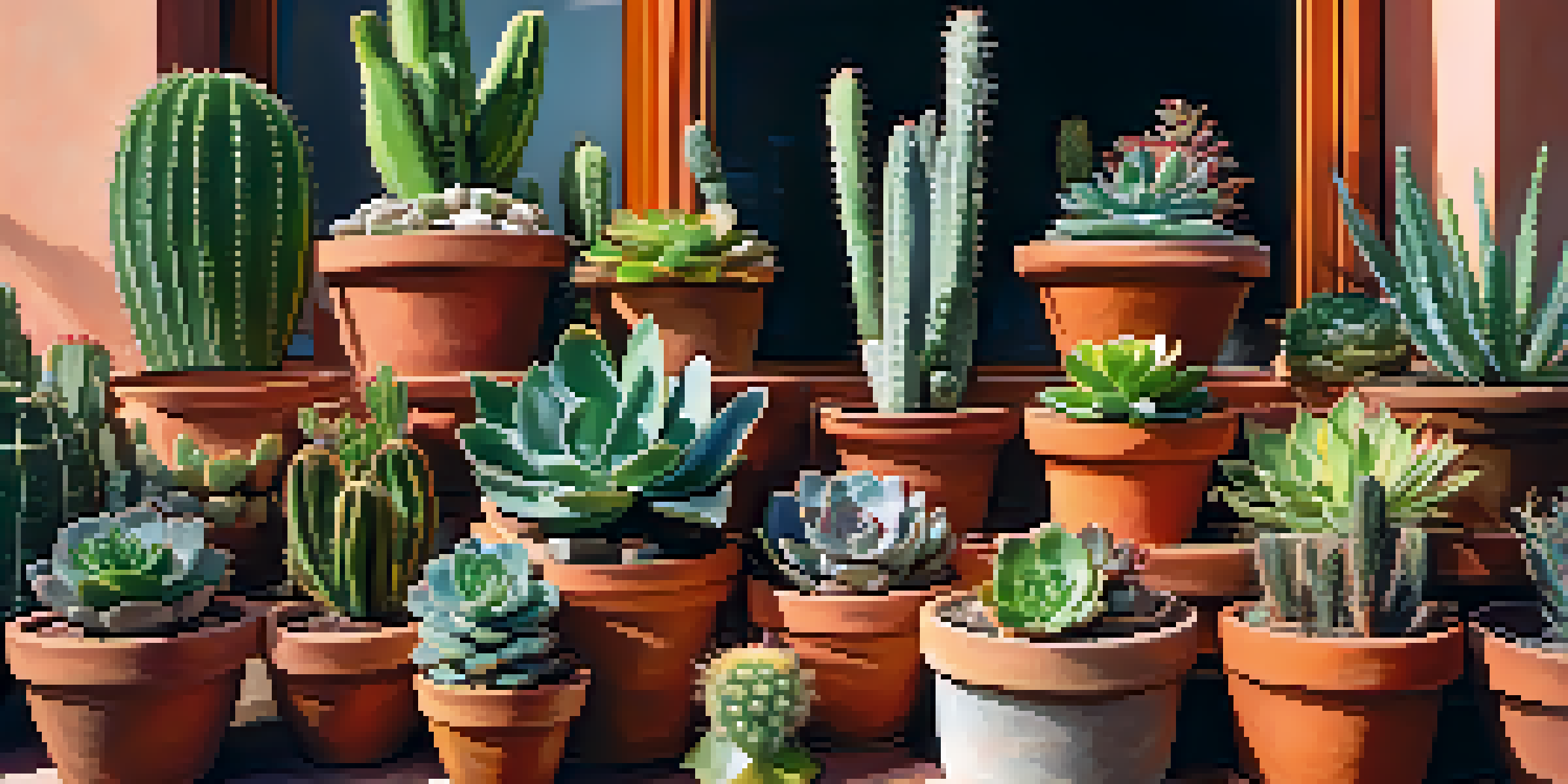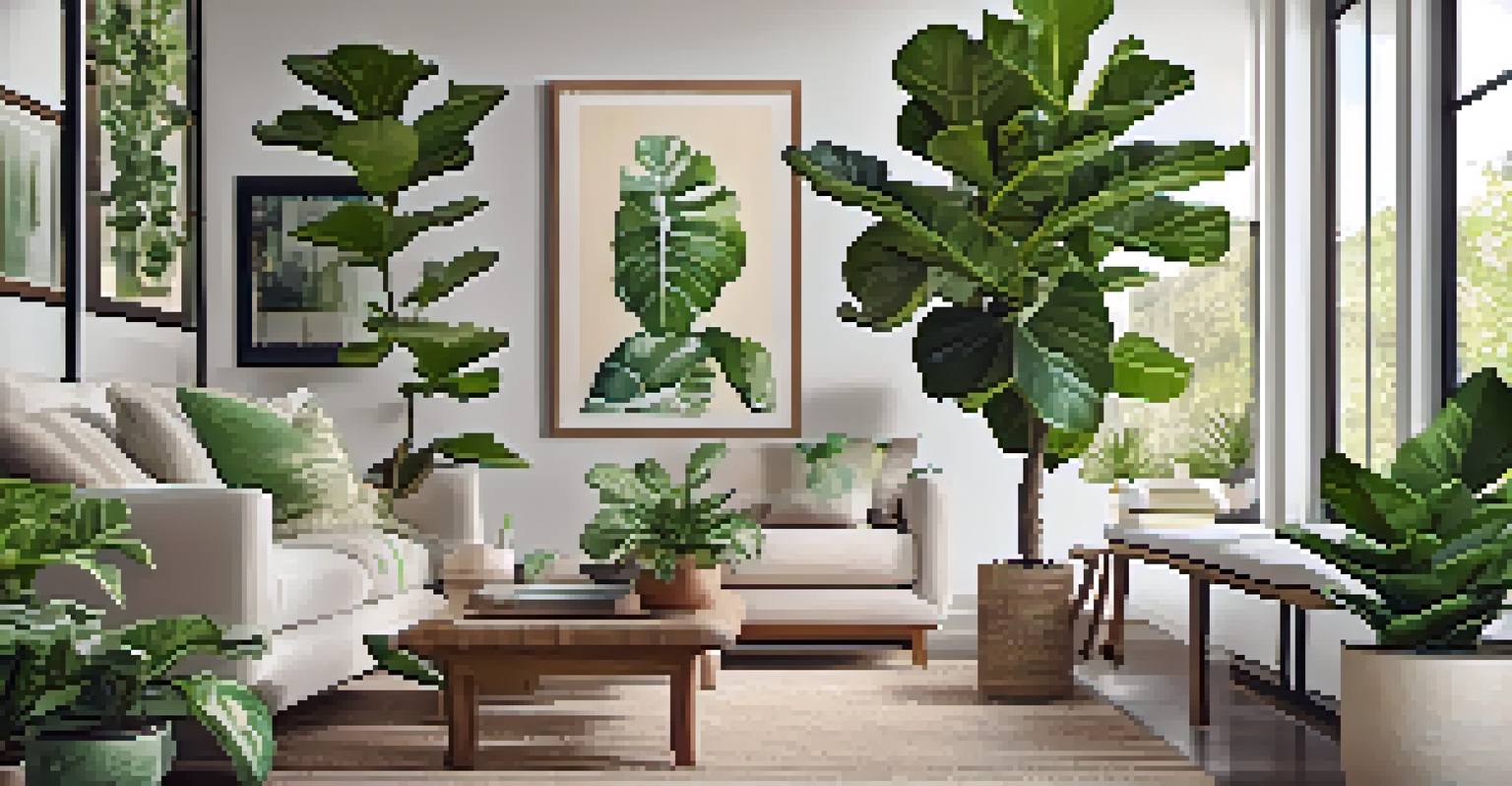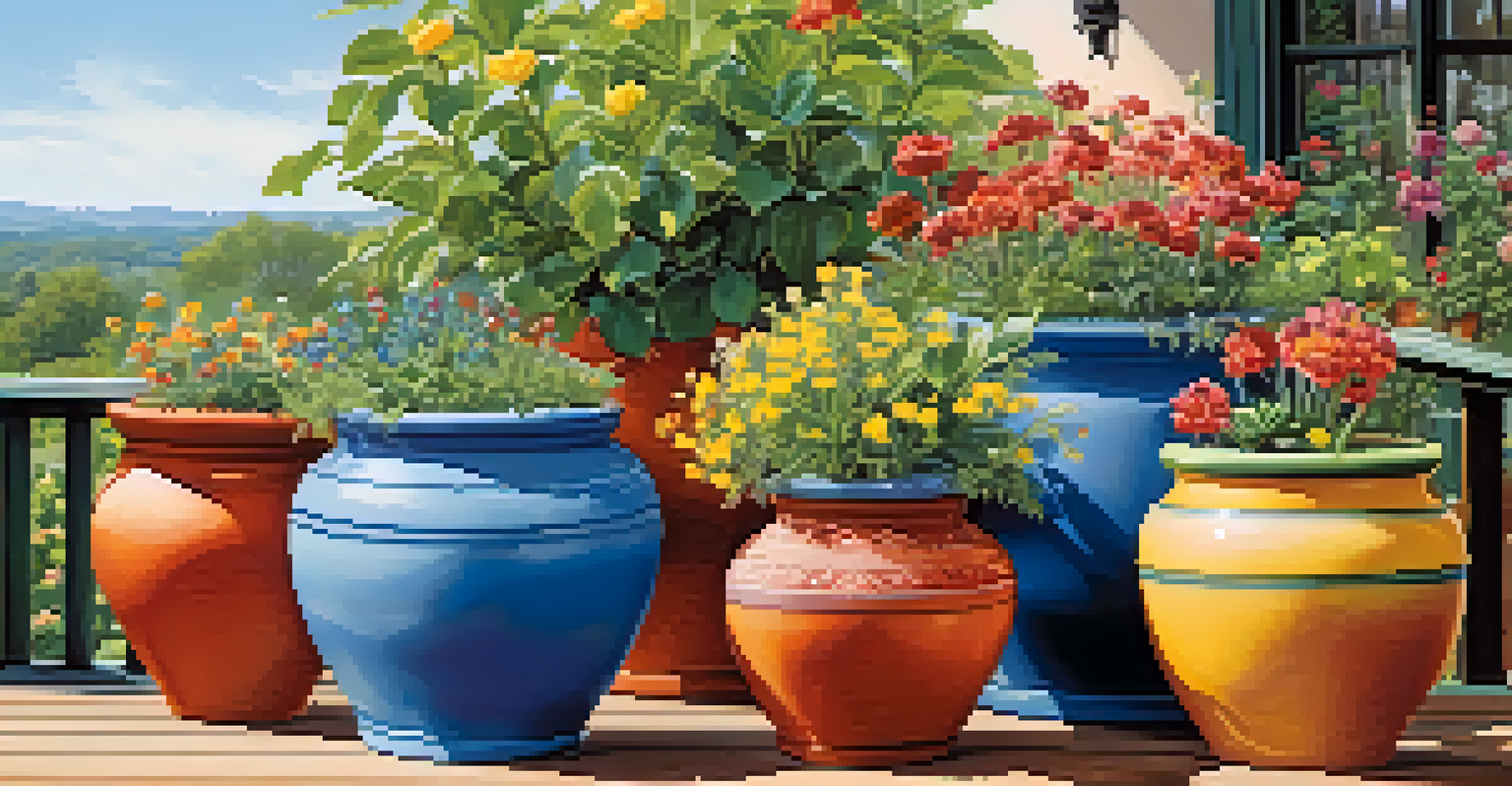Choosing the Right Planters for Different Plant Types

Understanding the Importance of Planter Selection
Choosing the right planter is crucial for your plants' health and growth. The right container can provide the necessary drainage, space, and support for roots to thrive. Think of a planter as a home for your plants; it needs to be comfortable and suitable for their specific needs.
Plants respond to their environment, including the pots they are in. Choose wisely and they will thrive.
Different plants have unique requirements based on their size, type, and care needs. For example, succulent plants prefer shallow pots with good drainage, while larger plants need deeper containers to accommodate their extensive root systems. Understanding these needs is the first step in ensuring your plants flourish.
Moreover, the material of the planter can affect the temperature and moisture retention of the soil. Terracotta, for instance, is breathable and great for plants that require drier conditions, while plastic pots can retain moisture longer, making them suitable for plants that thrive in humid environments.
Choosing Planters for Succulents and Cacti
Succulents and cacti are popular for their low maintenance and unique appearances. These plants thrive in well-draining soil, so selecting a planter with drainage holes is essential. A shallow terracotta pot is often ideal, as it allows excess water to escape and prevents root rot.

When choosing a planter, consider the size and shape. Succulents generally have shallow root systems, so they don’t need deep pots. A wide, shallow planter can also create an appealing display, allowing the plants to spread out and showcase their beautiful shapes.
Select Planters for Plant Needs
Choosing the right planter based on your plants' specific requirements ensures optimal health and growth.
Additionally, consider the aesthetic of the planter. Brightly colored or uniquely shaped pots can add a fun touch to your decor while providing the right environment for your succulents. Just ensure that the container complements the plants rather than overwhelming them.
Selecting Planters for Flowering Plants
Flowering plants often have different requirements than succulents and cacti. They typically need more nutrients and moisture, making it crucial to choose a planter that retains some moisture while still allowing for drainage. A medium-sized ceramic pot with drainage holes can be a great choice for many flowering plants.
The right planter is like a good home; it supports growth and nurtures life.
Consider the growth habits of your flowering plants when selecting a planter. Tall flowering plants may require deeper pots to support their height and root systems, while trailing varieties can thrive in hanging baskets or shallow containers. The right planter can enhance their beauty and help them grow robustly.
Another consideration is the color and design of the planter. Vibrant pots can enhance the colors of your flowers, creating a stunning focal point in your space. Choose a design that complements the overall aesthetic of your home or garden to create harmony in your plant arrangements.
Best Planters for Herbs and Vegetables
Growing herbs and vegetables can be a rewarding experience, and the right planter can make all the difference. These plants often require a larger space for their roots and good drainage to prevent overwatering. Consider using larger containers like wooden planters or fabric pots for optimal growth.
Herbs, like basil and parsley, usually thrive in pots that are at least 6-12 inches deep. This depth allows for adequate root growth and ensures the plants get enough nutrients. You can even plant multiple herbs in one container, provided they have similar care requirements.
Consider Material and Drainage
The material of the planter affects moisture retention and temperature, making proper drainage crucial for plant health.
Additionally, consider the material of the planter. Wooden planters are great for vegetables, as they provide insulation and are often more aesthetically pleasing in a garden setting. Just be sure to choose untreated wood to avoid chemicals leaching into your plants.
Choosing Planters for Indoor Plants
Indoor plants often have specific needs based on their environment. They generally require planters that provide good drainage and can hold enough moisture without becoming waterlogged. A ceramic or plastic pot with drainage holes is commonly used for a variety of indoor plants.
When selecting a planter for indoor plants, consider the size and weight. Larger plants, like fiddle leaf figs, may need sturdier pots to support their weight, while smaller plants, like pothos, can thrive in lighter containers. It’s also important to keep in mind the aesthetics of your indoor space.
Furthermore, don’t overlook the importance of the pot's color and design. Bright or decorative pots can enhance your interior decor, while minimalist designs can help create a calming environment. Choose a planter that reflects your personal style and complements your home.
Planters for Outdoor Plants and Gardens
Outdoor plants face different challenges than their indoor counterparts, so choosing the right planter is vital. Weather conditions, soil types, and drainage are all factors to consider. Heavy-duty materials like resin or metal are great for outdoor use, as they can withstand various weather conditions.
When selecting a planter for outdoor plants, ensure it has adequate drainage to prevent water from pooling. Raised planters or containers with drainage holes are ideal, allowing excess water to escape while keeping the roots healthy. This is particularly important for plants that are more susceptible to root rot.
Eco-Friendly Options Matter
Sustainable planters made from biodegradable or repurposed materials contribute to a healthier environment while supporting plant growth.
Additionally, consider the size of your outdoor space. Large planters can serve as focal points or barriers in a garden, while smaller containers can be used to create a cozy atmosphere on patios or balconies. Mixing different sizes and styles can add visual interest and encourage healthy plant growth.
Eco-Friendly Planter Options to Consider
As more people become environmentally conscious, the demand for eco-friendly planters is on the rise. There are various sustainable materials available, such as biodegradable pots made from recycled paper or bamboo. These options are not only good for the planet but also often provide excellent drainage and aeration for plant roots.
Another eco-friendly option is to use repurposed materials for planters. Old wooden crates, tin cans, or even glass jars can be transformed into unique plant containers with a little creativity. This not only reduces waste but also adds a personal touch to your plant displays.

When choosing eco-friendly planters, consider their durability and lifespan. While some biodegradable options may break down over time, they are often great for starting seeds or young plants. Ensuring that your choices are both sustainable and functional is key to maintaining a healthy and eco-friendly garden.
Maintaining Your Planters for Long-Term Use
Once you've selected the perfect planters for your plants, maintenance becomes essential for long-term success. Regularly check for drainage issues, as clogged holes can lead to overwatering and root rot. Cleaning your planters and ensuring that they remain in good condition will help prolong their lifespan.
Additionally, consider the need for repotting as your plants grow. Some plants may outgrow their initial containers, requiring a larger planter to accommodate their roots. Repotting not only gives your plants more space but also refreshes the soil, providing essential nutrients.
Finally, don’t forget to monitor the overall health of your plants. Yellowing leaves or stunted growth can indicate that your planter is no longer suitable. Regularly assessing both your plants and their containers will keep your garden thriving for years to come.